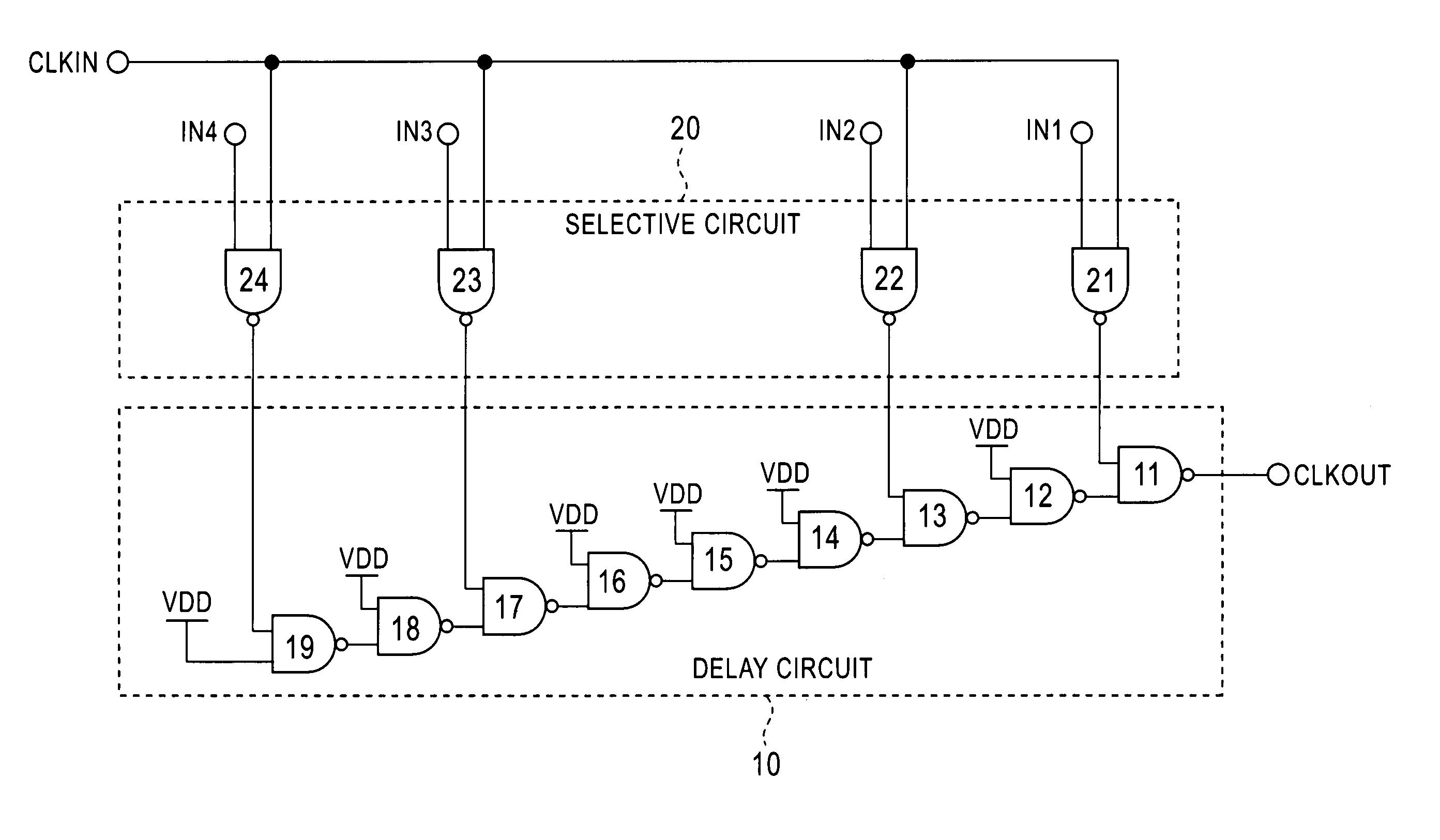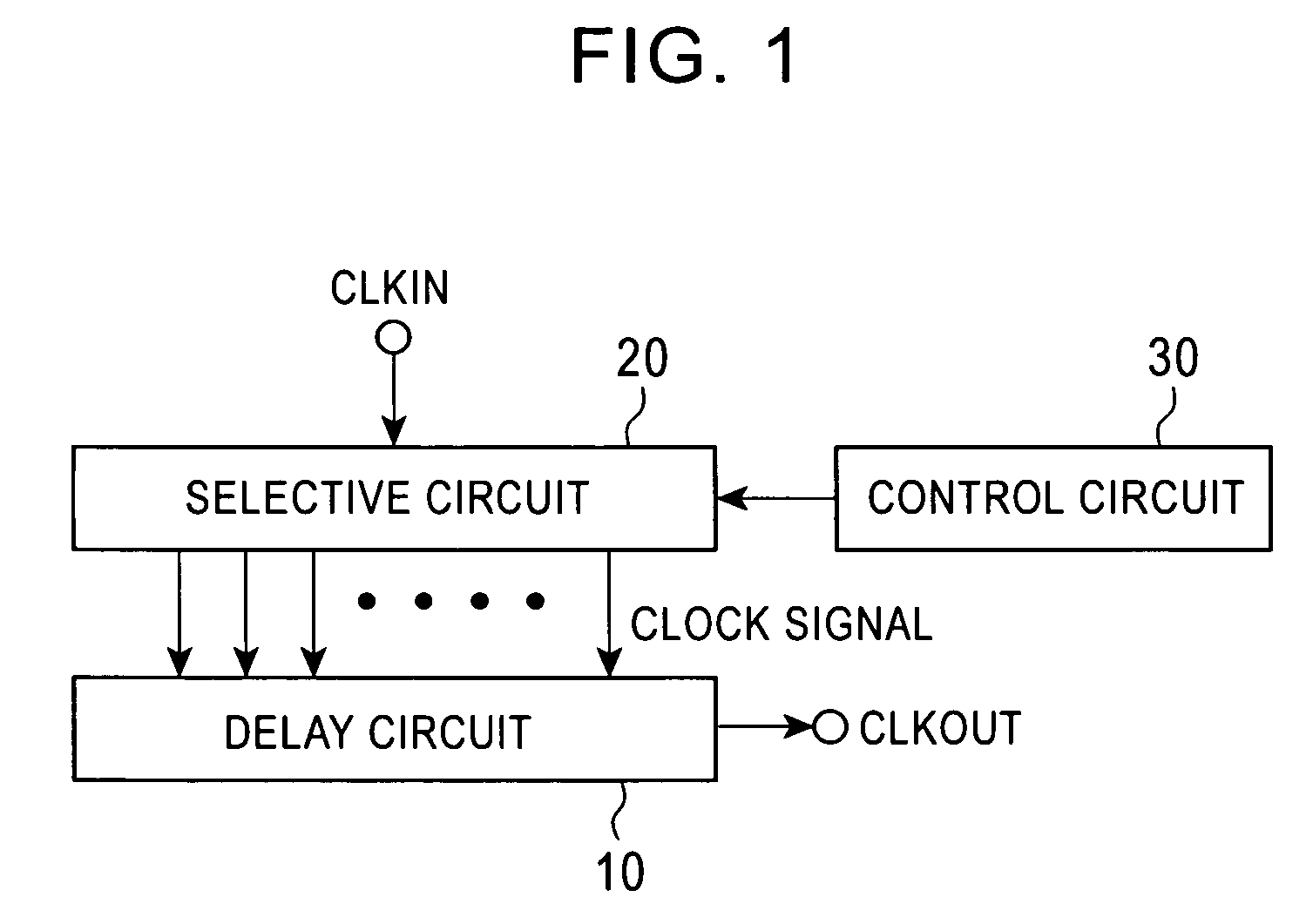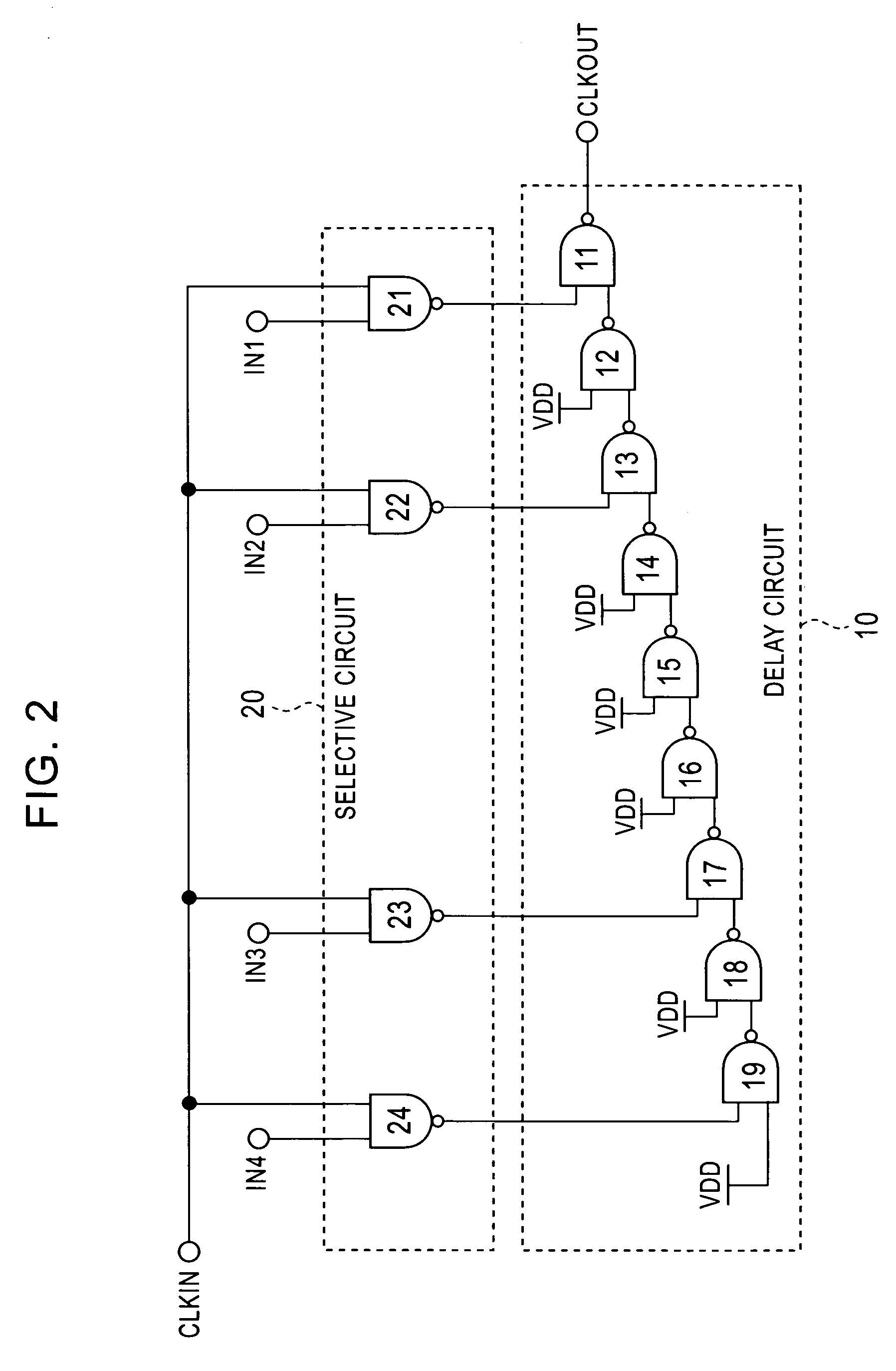Spread spectrum clock generating circuit
a technology of generating circuit and spread spectrum, which is applied in the direction of generating/distributing signals, pulse techniques, instruments, etc., can solve the problems of increasing the period of frequency variation, affecting and increasing the accumulative delay of fundamental waves, so as to reduce the driving ability of delay circuit and reduce the circuit area. , the effect of reducing power consumption
- Summary
- Abstract
- Description
- Claims
- Application Information
AI Technical Summary
Benefits of technology
Problems solved by technology
Method used
Image
Examples
first exemplary embodiment
[0022]FIG. 2 is a specific exemplary block diagram showing a clock generating circuit according to a first exemplary embodiment of the present invention. A delay circuit 10 is constituted by nine two-input NAND gates 11 to 19 which are cascade-connected. A selective circuit 20 is constituted by four two-input NAND gates 21 to 24. Each output of the NAND gates 21 to 24 in the selective circuit 20 is connected to one input terminal of each of the NAND gates 11, 13, 17, and 19 in the delay circuit 10. A clock signal CLKIN is input to one input terminal of each of the NAND gates 21 to 24 in the selective circuit 20, and control signals IN1 to IN4 from a control circuit 30 (not shown in FIG. 2 and including a shift register and a binary counter) are input to the other input terminals of the NAND gates 21 to 24. In this exemplary clock generating circuit, the NAND gates 11 to 19 in the delay circuit 10 serve as delay elements, while the NAND gates 21 to 24 in the selective circuit 20 serv...
second exemplary embodiment
[0029]Although the first exemplary embodiment uses two-input NAND gates as delay elements, the delay elements are not limited to two-input NAND gates, and other logic gates such as NOR gates may be used as delay elements. When two-input NOR gates are used as delay elements and switches in the exemplary selective circuit 20, by setting one of the control signals IN1 to IN4 at the “L” level, the two-input NOR gate, to which the control signal are set to the “L” level, is opened and the input clock signal that is input to the other input terminal is inverted and output. In the first exemplary embodiment, by providing the NAND gates 21 to 24 in the selective circuit 20 with delay times equivalent to those provided by the NAND gates 11 to 19 in the delay circuit 10, a reduced number of stages of the delay elements can be achieved. However, in cases in which it is not necessary to consider a reduction in the number of stages, any delay times may be used. For example, ordinary analog switc...
PUM
 Login to View More
Login to View More Abstract
Description
Claims
Application Information
 Login to View More
Login to View More - R&D
- Intellectual Property
- Life Sciences
- Materials
- Tech Scout
- Unparalleled Data Quality
- Higher Quality Content
- 60% Fewer Hallucinations
Browse by: Latest US Patents, China's latest patents, Technical Efficacy Thesaurus, Application Domain, Technology Topic, Popular Technical Reports.
© 2025 PatSnap. All rights reserved.Legal|Privacy policy|Modern Slavery Act Transparency Statement|Sitemap|About US| Contact US: help@patsnap.com



